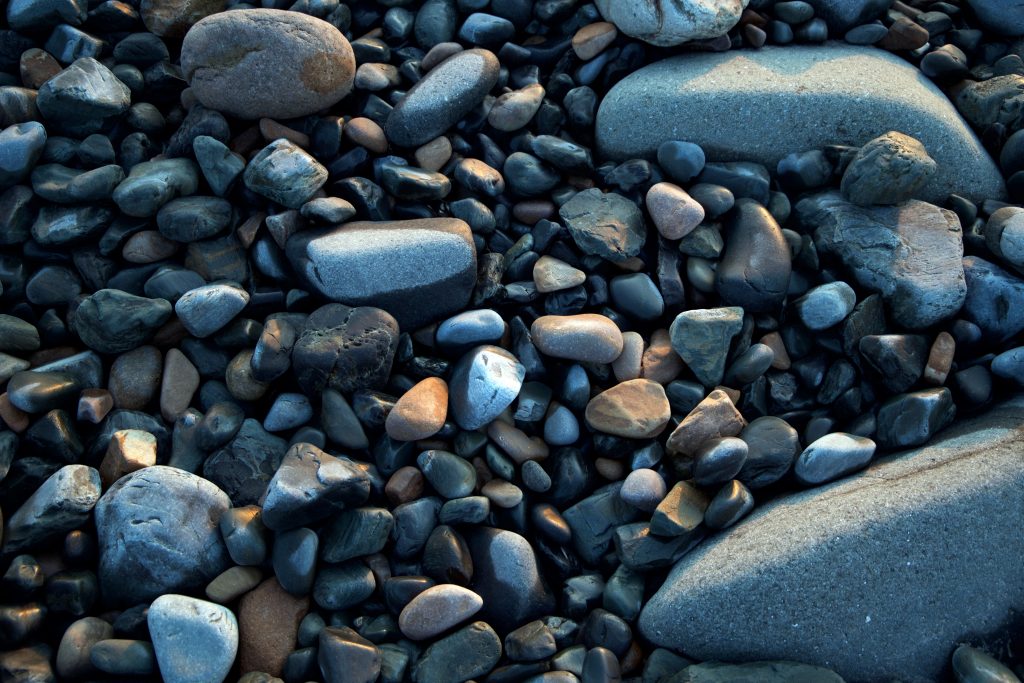If every child in the world would be taught meditation, we would eliminate violence from the world within one generation.
—The Dalai Lama
Parents often ask me if I know of any meditations geared toward children. Although not created with only children in mind, Pebble Meditation, developed by Zen master Thich Nhat Hanh, is commonly taught to children as an introduction to meditation and can be a meaningful practice for people of all ages.
How to Practice Pebble Meditation
For this practice, you will need four pebbles (a pouch to store the pebbles in may be helpful, but not necessary).
Ideally, you should locate a quiet, calm place that is conducive to meditation for you and your child(ren).
While in a comfortable, seated position on the floor, the practitioner should place the four pebbles on the floor on the left side of the body.
Begin by taking three slow, deep inhales and exhales, following the sensation of the breath in the body.
Phrase One: Beauty/Freshness
The practitioner picks up the first stone with the left hand and transfers it to the right hand.
Holding the pebble in the right hand, the practitioner says while inhaling, “Breathing in, I see myself as a flower.” On the exhale the practitioner says, “Breathing out, I am fresh.”
Over the next three cycles of inhales and exhales, the practitioner silently repeats, “flower” on the inhale and “fresh” on the exhale.
The practitioner then lays the pebble down on the right side of their body.
Phrase Two: Stability/Solidity
The practitioner then picks up the second stone with the left hand and transfers it to the right hand.
Holding the pebble in the right hand, the practitioner says while inhaling, “Breathing in, I see myself as a mountain.” On the exhale the practitioner says, “Breathing out, I am solid.”
Over the next three cycles of inhales and exhales, the practitioner silently repeats, “mountain” on the inhale and “solid” on the exhale.
The practitioner then lays the pebble down on the right side of their body.
Phrase Three: Peace/Tranquility
The practitioner then picks up the third stone with the left hand and transfers it to the right hand.
Holding the pebble in the right hand, the practitioner says while inhaling, “Breathing in, I see myself as still, clear water.” On the exhale the practitioner says, “Breathing out, I reflect things as they are.”
Over the next three cycles of inhales and exhales, the practitioner silently repeats, “clear water” on the inhale and “reflecting” on the exhale.
The practitioner then lays the pebble down on the right side of their body.
Phrase Four: Freedom/Liberation
The practitioner then picks up the fourth stone with the left hand and transfers it to the right hand.
Holding the pebble in the right hand, the practitioner says while inhaling, “Breathing in, I see myself as space.” On the exhale the practitioner says, “Breathing out, I am free.”
Over the next three cycles of inhales and exhales, the practitioner silently repeats, “space” on the inhale and “free” on the exhale.
The practitioner then lays the pebble down on the right side of their body.
Benefits of the Pebble Meditation
According to Thich Nhat Hanh, this meditation teaches the four qualities of happiness: beauty/freshness (flower), stability/solidity (mountain), peace/tranquility (still water), freedom/liberation (space/emptiness).
Additionally, once children become comfortable with the practice, they can also use the pebbles as objects to direct their attention to whenever they are feeling out of sorts. Perhaps, holding a pebble and repeating the “still, clear water” phrasing when feelings of confusion arise or “space” phrasing if they are having a hard time releasing something.
If you are looking for a way to introduce formal meditation to your children, Pebble Meditation is a nice place to begin. Not only is it simple, accessible, and dare I say fun, but it also has the added benefit of reminding us of our connection to the natural world since it utilizes and connects us to elements of nature.
Are you interest in learning more about the practices and principles of mindfulness for yourself or your family? If so, please check out our classes/workshops for opportunities to learn and grow your practice.


 Sometimes Laughter is the Best Medicine
Sometimes Laughter is the Best Medicine